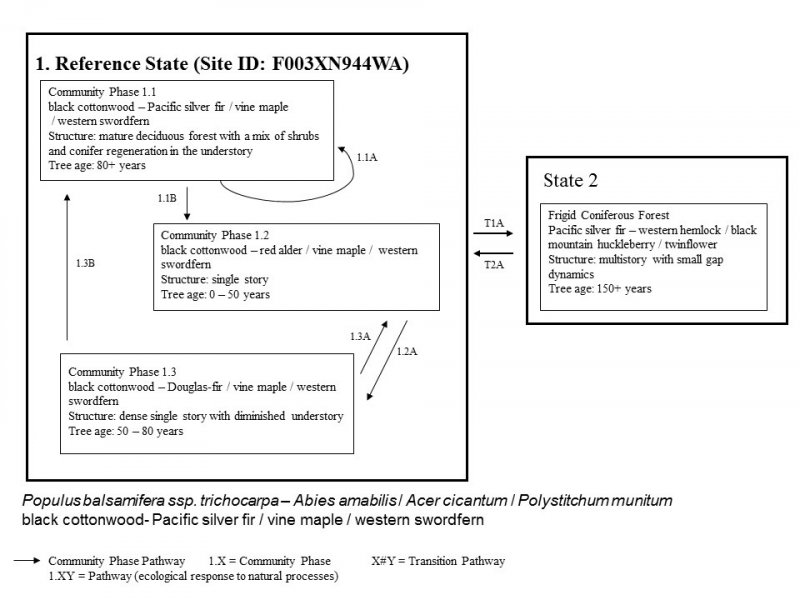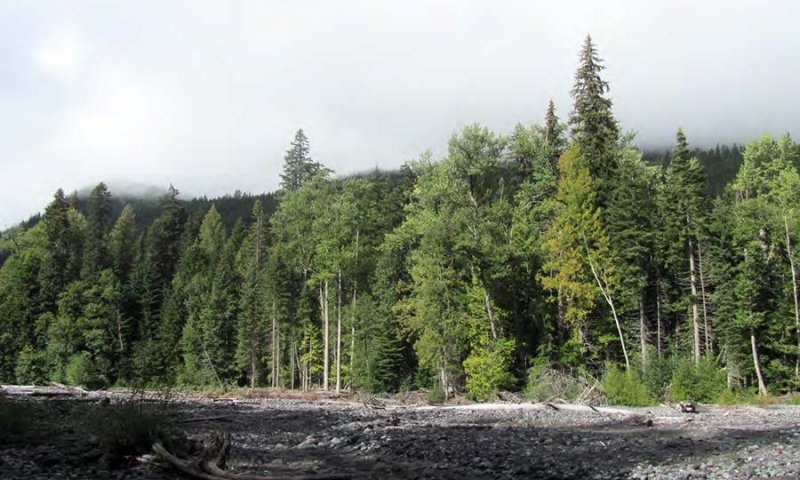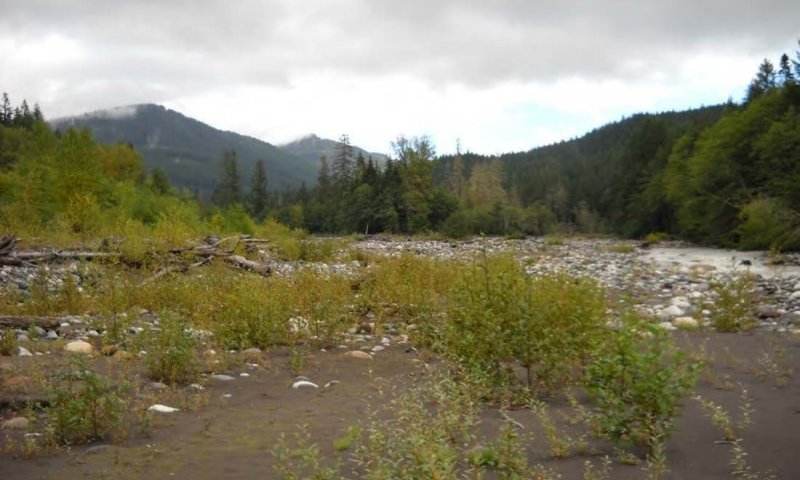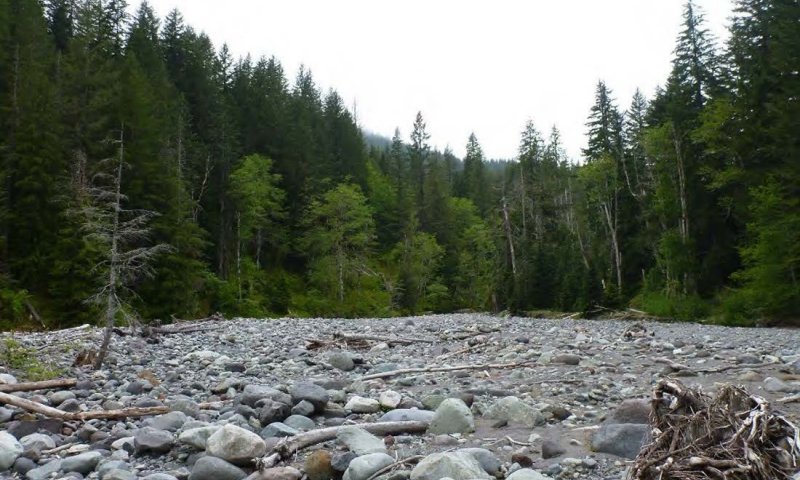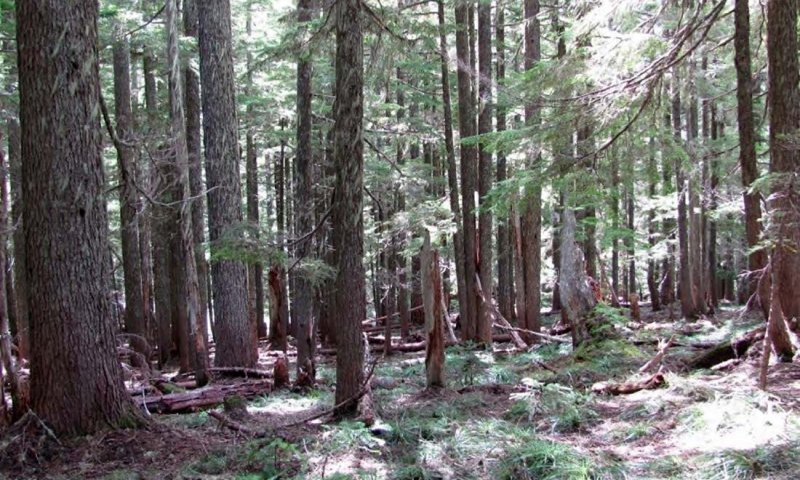

Natural Resources
Conservation Service
Ecological site F003XN944WA
Southern Washington Cascades Low Cryic Riparian Forest
Last updated: 5/10/2024
Accessed: 12/22/2024
General information
Provisional. A provisional ecological site description has undergone quality control and quality assurance review. It contains a working state and transition model and enough information to identify the ecological site.
MLRA notes
Major Land Resource Area (MLRA): 003X–Olympic and Cascade Mountains
Steep mountains and narrow to broad, gently sloping valleys characterize this MLRA. A triple junction of two oceanic plates and one continental plate is directly offshore from Puget Sound. Subduction of the oceanic plates under the westerly and northwesterly moving continental plate contributes to volcanic activity in the Cascade Mountains. Movement among these plates has resulted in major earthquakes and the formation of large stratovolcanoes. The Cascade Mountains consist primarily of volcanic crystalline rock and some associated metasedimentary rock. The mean annual precipitation is dominantly 60 to 100 inches, but it is 30 to 60 inches on the east side of the Cascade Mountains.
The soil orders in this MLRA are dominantly Andisols, Spodosols, and Inceptisols and minor areas of Entisols and Histosols. The soils are dominantly in the frigid or cryic temperature regime and the udic moisture regime. The soils generally are shallow to very deep, well drained, ashy to medial, and loamy or sandy. They are on mountain slopes and ridges.
Ecological site concept
This ecological site is in cold, moist areas of Mount Rainier National Park at middle to high elevations (2,000 to 6,100 feet). Elevation and climate are key components in the succession of the forest dynamics. The cold winters and mild summers affect the rates of growth and maturity of species. This site is along active flood plains, valleys, and terraces of river valley bottoms that have a seasonal high water table, which influences the dynamics of the vegetation. The most common natural disturbance is flooding. The volume and longevity of the flooding determine the effect on the dynamics of the forest.
The soils that support this ecological site are in the cryic soil temperature regime and the udic soil moisture regime. The soils are subject to rare periods of flooding in April, May, October, and November. Soil moisture is not a limiting factor to forest growth because of the abundance of precipitation and the inherent water-holding properties of soils influenced by volcanic ash. Slope and aspect are not defining features of this site.
Black cottonwood (Populus balsamifera ssp. Trichocarpa) and Pacific silver fir (Abies amabilis) are the most common overstory species. The site supports a variety of species, including western redcedar (Thuja plicata), Sitka alder (Alnus viridis ssp. sinuata), western hemlock (Tsuga heterophylla), Engelmann spruce (Picea engelmannii), and Douglas-fir (Pseudotsuga menziesii). Regeneration commonly is limited by the frequency of flooding.
Associated sites
| F003XN947WA |
Southern Washington Cascades Low Cryic Coniferous Forest Site F003XN944WA is in an earlier forest successional stage because of frequent disturbance compared to F003XN947WA. It is expected that in the absence of flooding, ecological site F003XN944WA will mature into an old-growth forest resembling that of site F003XN947WA. |
|---|
Similar sites
| F003XN940WA |
Southern Washington Cascades Frigid Riparian Forest Ecological Site F003XN944WA, Southern Washington Cascades Low Cryic Riparian Forest, has features that are similar to those of site F003XN940WA, Southern Washington Frigid Riparian Forest. Both ecological sites are influenced by flood dynamics and similar disturbance patterns; however, elevation distinguishes the sites. Ecological site F003XN940WA is at an elevation of 1,600 to 2,100 feet, and site F003XN944WA is at an elevation of more than 2,100 feet. Site F003XN944WA supports species more common at higher elevations, such as Pacific silver fir. The productivity of the forest on site F003XN940WA is higher as a result of the longer growing season, warmer temperatures, and reduced snowpack. |
|---|---|
| F003XN949WA |
Southern Washington Cascades High Cryic Riparian Forest Ecological site F003XN949WA is located at high elevations compared to site F003XN944WA, Southern Washington Cascades Low Cryic Riparian Forest. Both sites are associated with the Flett soils and are subject to intense flooding. Site F003XN949WA is in colder, wetter areas at high elevations; thus, the growing conditions are harsher. Ecological site F003XN944WA supports black cottonwood and Pacific silver fir in the reference community, and site F003XN949WA supports Alaska cedar and Sitka alder. The rates of maturity and growth of species are lower on site F003XN949WA than they are on site F003XN944WA. |
Table 1. Dominant plant species
| Tree |
(1) Populus balsamifera ssp. trichocarpa |
|---|---|
| Shrub |
(1) Acer circinatum |
| Herbaceous |
(1) Polystichum munitum |
Click on box and path labels to scroll to the respective text.
